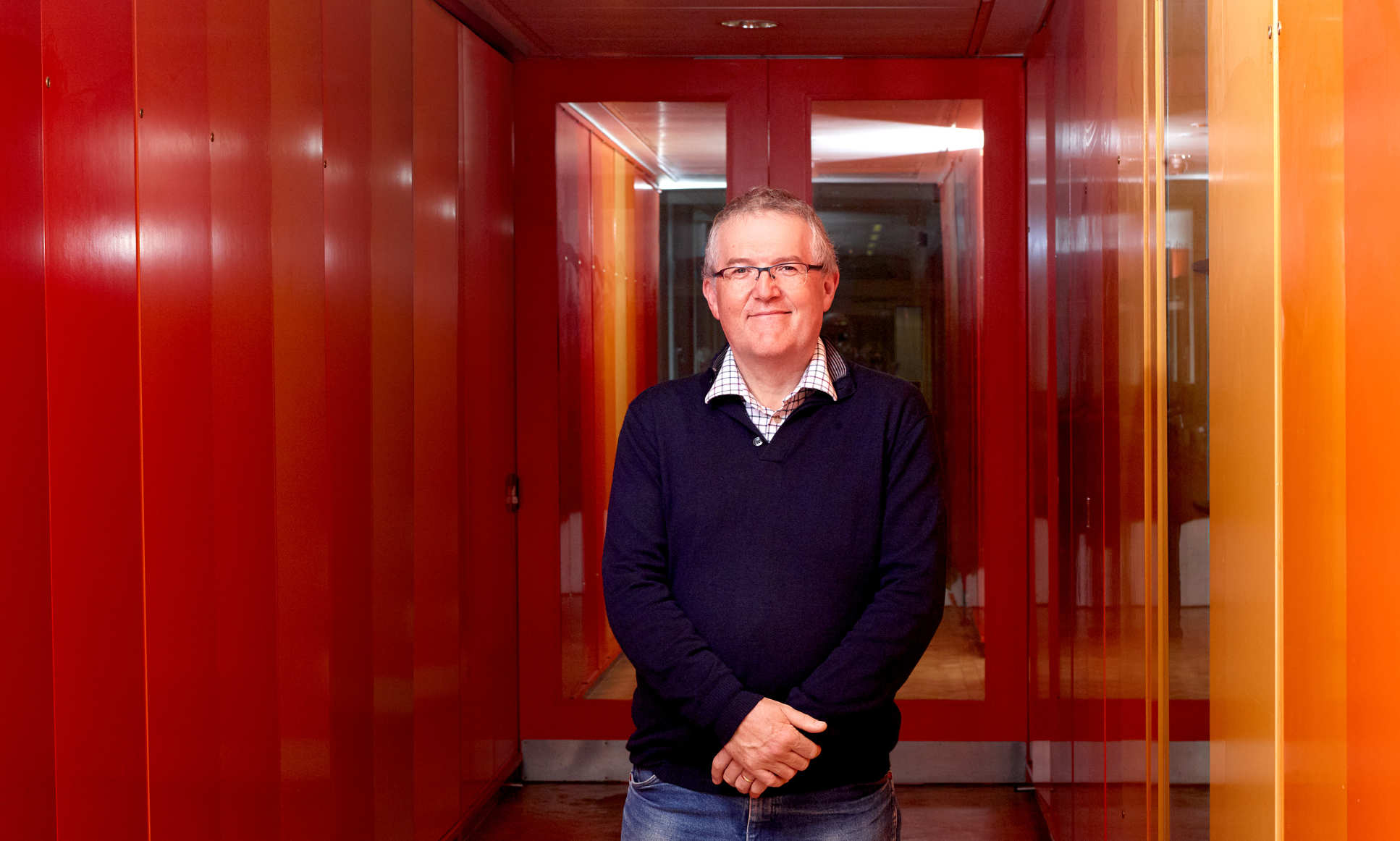Looking back is the best way to look forward, says earth scientist Professor Peter Allison.

Words: Megan Welford / Photography: Angela Moore
Professor Peter Allison found his passion for uncovering the Earth’s secrets in a caravan on the north-east coast of England. “As a boy on holiday in the late 1960s and 70s, I pretty much got to run feral!” he says. “I loved rock pools – turning things over and finding critters. Finding fossils.”
These days, his passion for fossils has evolved. “I found classifying the rocks and fossils of one area was a bit dull,” he says, “but then, in the 1980s, I read a paper where the researchers had used a computer model to look at how the whole Earth had responded to climate change over time and I thought, ‘This is cool.’ They were using fossils to answer the big questions.”
And so, he took the plunge into the world of deep time diversity, and now uses the oceans, tides and climate to model how the world was a very long time ago – or sometimes, how it wasn’t. “Our work helps recognise the bias in exploring deep time,” he explains. “If I want to look at the world 100 million years ago, there were rocks in some places and not in others. In the intervening period some of those rocks were buried, some lifted, some eroded. You maybe have a few per cent left. If, in 100 million years, someone wanted to look at the Earth today, and the only preserved bit was from the Sahara, they would get a biased picture. Our tools combine the rock with other data – climate, atmospheric, ocean, tidal – to add to the accuracy of the picture.”
Were the dinosaurs already in decline before they became extinct? Our modelling tool was able to show they were not"
Professor Peter Allison
Indeed, the work of Allison and his students has recently settled a longstanding dinosaur debate. “Were the dinosaurs already in decline before they became extinct? Our modelling tool was able to show that their habitat was actually fantastic, and that previous work had been sampling the wrong parts of the system. So, they were not in decline before their sudden demise.”
These tools can be used for things such as helping ecologists looking for butterflies in the Amazon, for example. “If you go to two or three spots and gather data on the slope, rainfall and plants there, and train a computer model to use these parameters across the whole of the Amazon basin, then you can ask the computer, ‘Where shall I go and look next?’ And then you can gather more information.”
For Allison, there’s an element of magic to it all. “It takes me back to fossil collecting with my dad. When you split a rock, and you’re the first person to see the animal inside that hasn’t seen the sun’s rays for 200 million years, it’s a magical feeling. Using these tools to see what the ancient Earth was like is the same feeling.”
Understanding the world of deep time can also tell us much about future time. “We have good reason to think we are currently in the early stages of the sixth mass extinction,” he says. This is the Holocene extinction, which will be the first where more than 75 per cent of species loss is caused by humans. “My tools allow us to recognise the bias in the data and tell us what questions we can’t answer. Then other people – conservation ecologists and biologists – can use that to add to the picture of what the impact of global warming will be. Because looking at how rocks have responded to climate perturbations in the past can tell us how bad things could be in the future.”
Professor Peter Allison is Professor of Earth Science at the Department of Earth Science and Engineering.